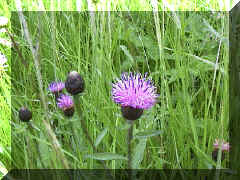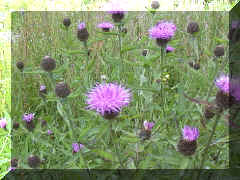Species Datapage No 16
You may click on most photographs to enlarge. *Denotes a Naturalised species
Scroll down to find a species
|
Species Datapage No 16 |
|
You may click on most photographs to enlarge. *Denotes a Naturalised species |
|
Scroll down to find a species |
| Species Common Name: Lady's Bedstraw | |||||||||||||
| Species Botanical Name: Galium verum | |||||||||||||
|
Lady's bedstraw is an excellent species and if your soil is light , dry or well drained, this species is another one of the great wildflowers used in Horticulture. Planted from seed our plants we have inland and seaside strains to help you get it right. This species is wiry and was once used to fill pillows and mattresses.. |
|||||||||||||
| Found mainly in grazed or ungrazed calcareous grasslands, newly stabilised sand dunes and sea cliffs. Common on sandy soils where it forms large colonies. | |||||||||||||
| Management: Cut anytime, Allow to set seed. Will spread by running roots. Not tolerant of any prolonged flooding. | |||||||||||||
| Tolerance of cutting: High, best in low growing regularly cut meadow where it persists. Found on banks ditches and in real old Meadows on any light soil. | |||||||||||||
| Cutting time: Anytime except in flower, or every 6 weeks in low growing regularly cut meadow | |||||||||||||
| Edible / Medicinal: | |||||||||||||
|
Life Cycle (Form): Creeping Perennial Flower Height: 20 to 60 cm Foliage Height: 5 - 30 cm Flower Colour: Yellow, Flowering period: July, August, Time to Flower: 24 months Soil Type: Will grow in most soils, best in dry, sandy, Loam, pH Type: Acid, Neutral, Alkaline. Moisture: Dry, Moist, Aspect: Full sun, Wildlife Value: High, Attracts Butterflies, Bees, Hoverflies and Insects. |
|||||||||||||
|
|||||||||||||
| Species Common Name: Lesser Knapweed | |||||||||||||
| Species Botanical Name: Centaurea nigra | |||||||||||||
| An important nectar source for butterflies. One of the most successful plants on a range of soils and situations, Livestock will not eat this flower and farmers call it Black Heads. | |||||||||||||

 |
|||||||||||||
| Management: Allow to set seed, for germination and if separately grown on roadside or banks for birds, do not cut at the normal Autumn ( end of summer) cutting time, instead allow flocks of Birds (Finches) to eat the seeds in the seed heads. This species over-winters many insects in its seed head. | |||||||||||||
| Tolerance of cutting: Medium, A typical hay meadow plant. Prefers not to be cut but grazed so grasses are kept short about it. | |||||||||||||
| Cutting time: Spring, Autumn. | |||||||||||||
| Edible / Medicinal: Do not consume unless advised. | |||||||||||||
|
We put this wed in many of our mixtures as it if by far one of the best wildflowers for nature conservation, not the most beautiful, and farmers do not like it. Lesser Knapweed is one of the very best and grows in any site from the mountaintop to the sea shore, it germinates easily and flowers (for a large perennial) relatively early in it's life. The plant is very tough and wiry and withstands trampling, burning, and compact or flooded soils. a weed no doubt. If its Daffodils ya' want? Holland is that 'a away. |
|||||||||||||
|
Life Cycle (Form): Long lived Perennial Flower Height: 50 to 100 cm Foliage Height: 20 - 30 cm Flower Colour: Pink Flowering period: July, August, Time to Flower: 24 months Soil Type: Will grow in most soils. pH Type: Acid, Neutral, Alkaline. Moisture: Dry, Moist, Wet Aspect: Full sun, Partial shade, Wildlife Value: High, Attracts Birds, Butterflies, Bees, Bumblebees, Hoverflies and Insects. |
|||||||||||||